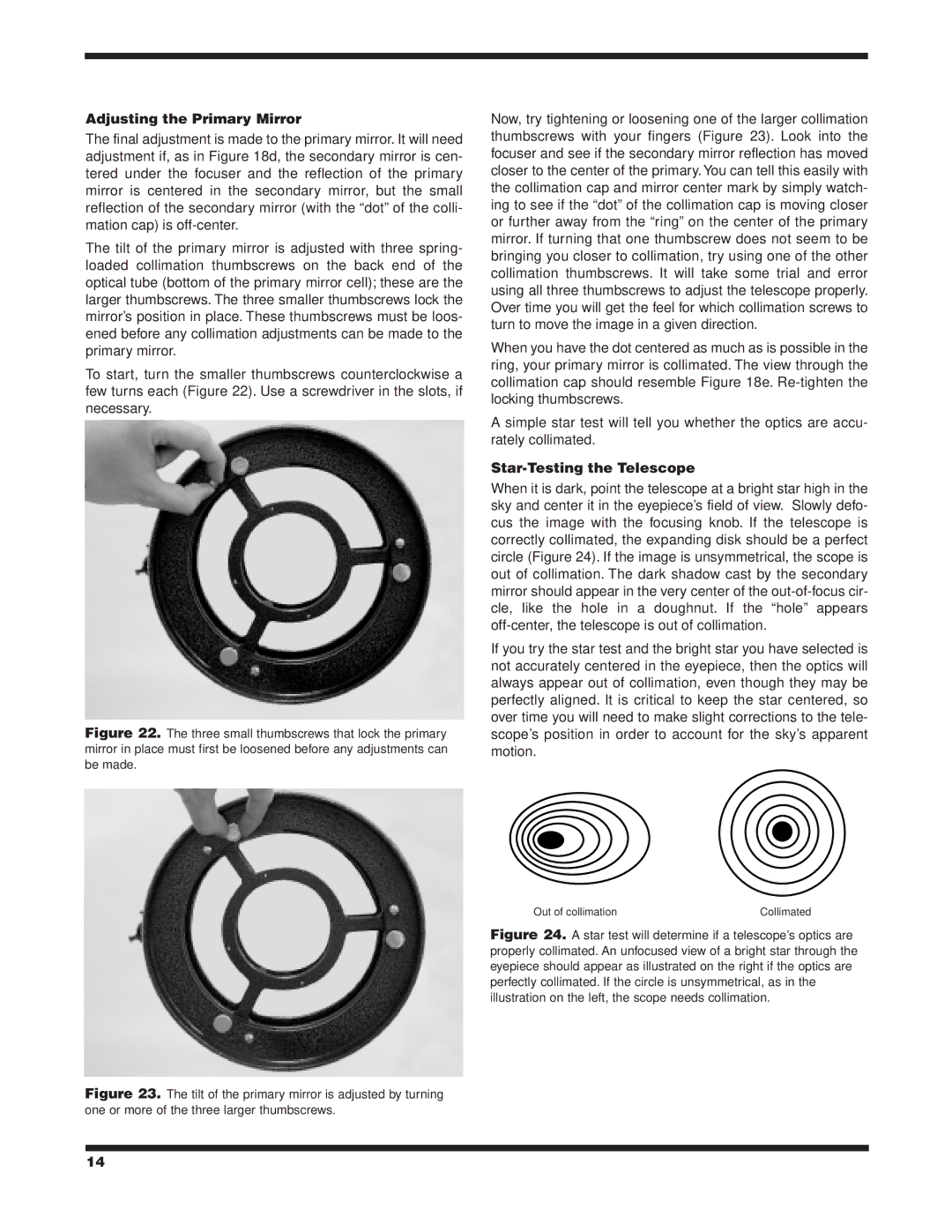
Adjusting the Primary Mirror
The final adjustment is made to the primary mirror. It will need adjustment if, as in Figure 18d, the secondary mirror is cen- tered under the focuser and the reflection of the primary mirror is centered in the secondary mirror, but the small reflection of the secondary mirror (with the “dot” of the colli- mation cap) is
The tilt of the primary mirror is adjusted with three spring- loaded collimation thumbscrews on the back end of the optical tube (bottom of the primary mirror cell); these are the larger thumbscrews. The three smaller thumbscrews lock the mirror’s position in place. These thumbscrews must be loos- ened before any collimation adjustments can be made to the primary mirror.
To start, turn the smaller thumbscrews counterclockwise a few turns each (Figure 22). Use a screwdriver in the slots, if necessary.
Figure 22. The three small thumbscrews that lock the primary mirror in place must first be loosened before any adjustments can be made.
Now, try tightening or loosening one of the larger collimation thumbscrews with your fingers (Figure 23). Look into the focuser and see if the secondary mirror reflection has moved closer to the center of the primary. You can tell this easily with the collimation cap and mirror center mark by simply watch- ing to see if the “dot” of the collimation cap is moving closer or further away from the “ring” on the center of the primary mirror. If turning that one thumbscrew does not seem to be bringing you closer to collimation, try using one of the other collimation thumbscrews. It will take some trial and error using all three thumbscrews to adjust the telescope properly. Over time you will get the feel for which collimation screws to turn to move the image in a given direction.
When you have the dot centered as much as is possible in the ring, your primary mirror is collimated. The view through the collimation cap should resemble Figure 18e.
A simple star test will tell you whether the optics are accu- rately collimated.
Star-Testing the Telescope
When it is dark, point the telescope at a bright star high in the sky and center it in the eyepiece’s field of view. Slowly defo- cus the image with the focusing knob. If the telescope is correctly collimated, the expanding disk should be a perfect circle (Figure 24). If the image is unsymmetrical, the scope is out of collimation. The dark shadow cast by the secondary mirror should appear in the very center of the
If you try the star test and the bright star you have selected is not accurately centered in the eyepiece, then the optics will always appear out of collimation, even though they may be perfectly aligned. It is critical to keep the star centered, so over time you will need to make slight corrections to the tele- scope’s position in order to account for the sky’s apparent motion.
Out of collimation | Collimated |
Figure 24. A star test will determine if a telescope’s optics are properly collimated. An unfocused view of a bright star through the eyepiece should appear as illustrated on the right if the optics are perfectly collimated. If the circle is unsymmetrical, as in the illustration on the left, the scope needs collimation.
Figure 23. The tilt of the primary mirror is adjusted by turning one or more of the three larger thumbscrews.
14
